Ahead of the Game
By Naperville Magazine
Appears in the July 2024 issue.
By Jen Banowetz
The new Olmec Trails exhibition links the past and present
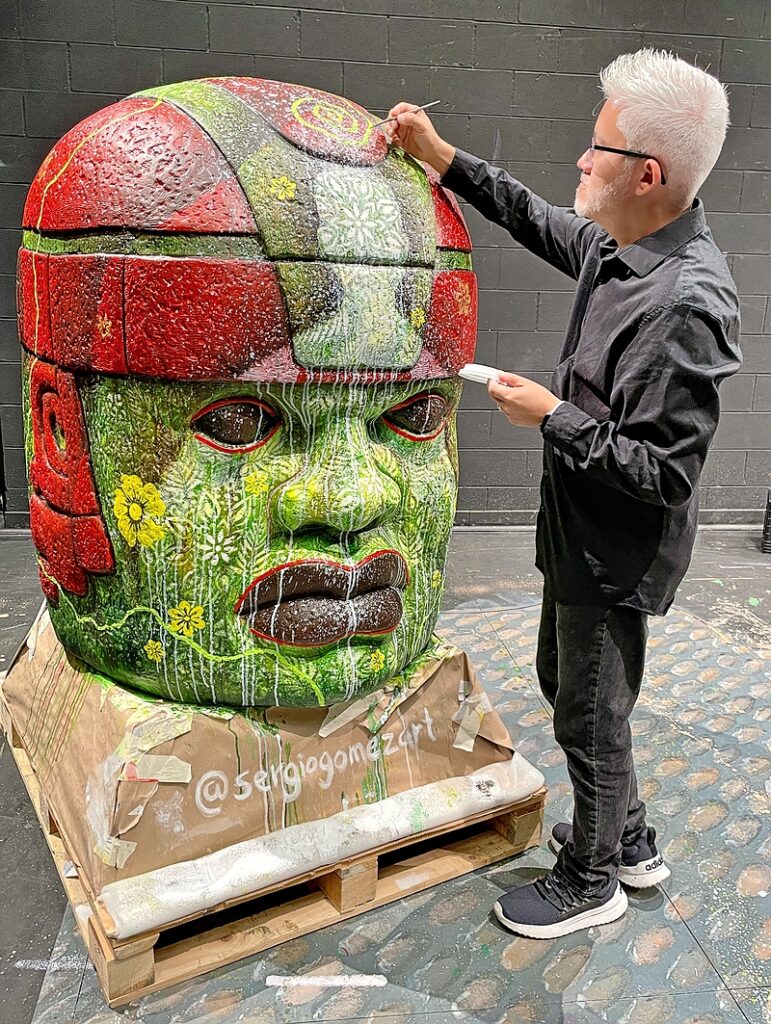
No, you are not imaging the giant heads—33 in all—popping up around DuPage County.
These modern versions of ancient colossal stone sculptures have been hand-painted by artists from all over North America as part of the new outdoor exhibition Olmec Trails: Culture and Legacy, designed to celebrate the Olmecs, Mesoamerica’s earliest civilization.
As a collaboration of the Mexican Cultural Center DuPage, Meztli Mexico, the College of DuPage Public Art Project, and the DuPage Convention & Visitors Bureau, the project aims to connect the past and present, culture and history—as well as to tie into the 2026 FIFA World Cup, which will be hosted by cities across Mexico, the United States, and Canada. (Among their many achievements, the Olmecs are credited with creating a ball game that’s considered a granddaddy of soccer.)
The colorful sculptures will be on display until October at public spots throughout the county, including forest preserves, libraries, train stations, as well as the Mexican Cultural Center DuPage in West Chicago. The epicenter is the College of DuPage, which will host 10 on its campus as well as offer educational programing. “People will see the heads and love them no matter what, but if they want to understand the Olmecs they can start at the Mac,” says Diana Martinez, director of COD’s McAninch Arts Center. For a complete guide, visit olmectrails.com.
Some of artists who traveled to DuPage in May to participate shared insights on their works.
SERGIO GOMEZ FROM MIAMI (above)
“On the head itself there is a trail. If you follow the trail, it starts in the back of the head, in the southern part of Mexico where the [original] Olmec heads were actually found. And if you follow the trail all the way through, at the end, it culminates on the front of the head. It’s a way of connecting the past with the present.”
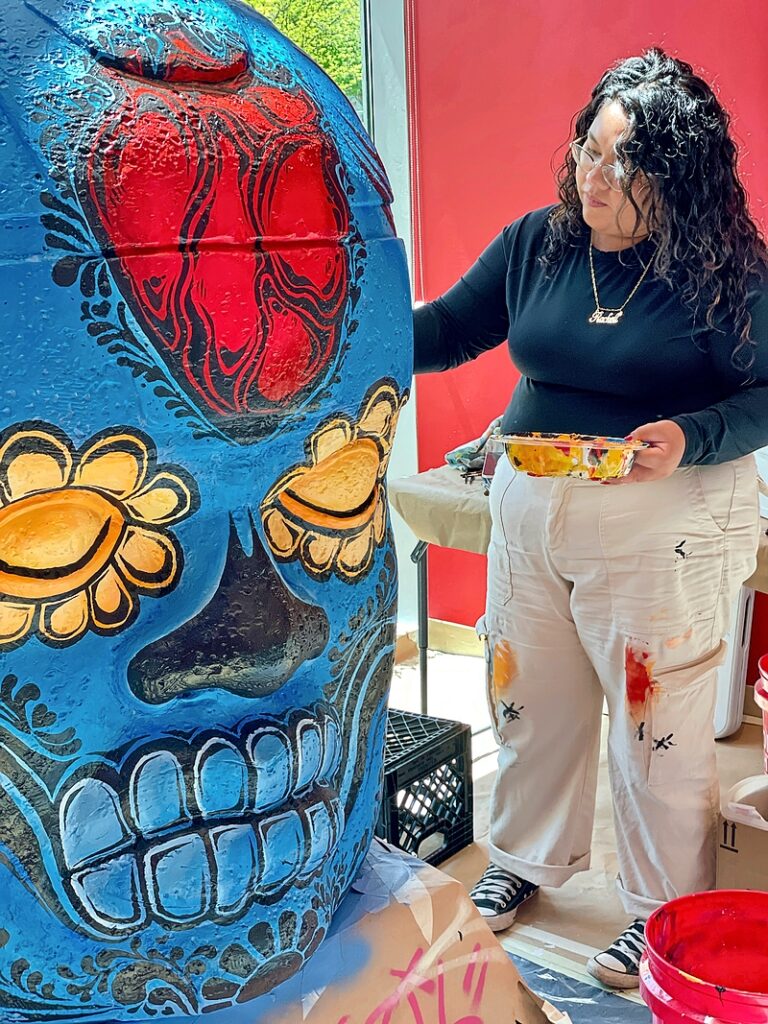
LIZ GONZALEZ (ZELAZNOGZIL) FROM KANSAS CITY, MISSOURI
“I wanted to encompass Día de los Muertos for my design, really focusing on the heart in the center, just to show that our culture is our heart.”
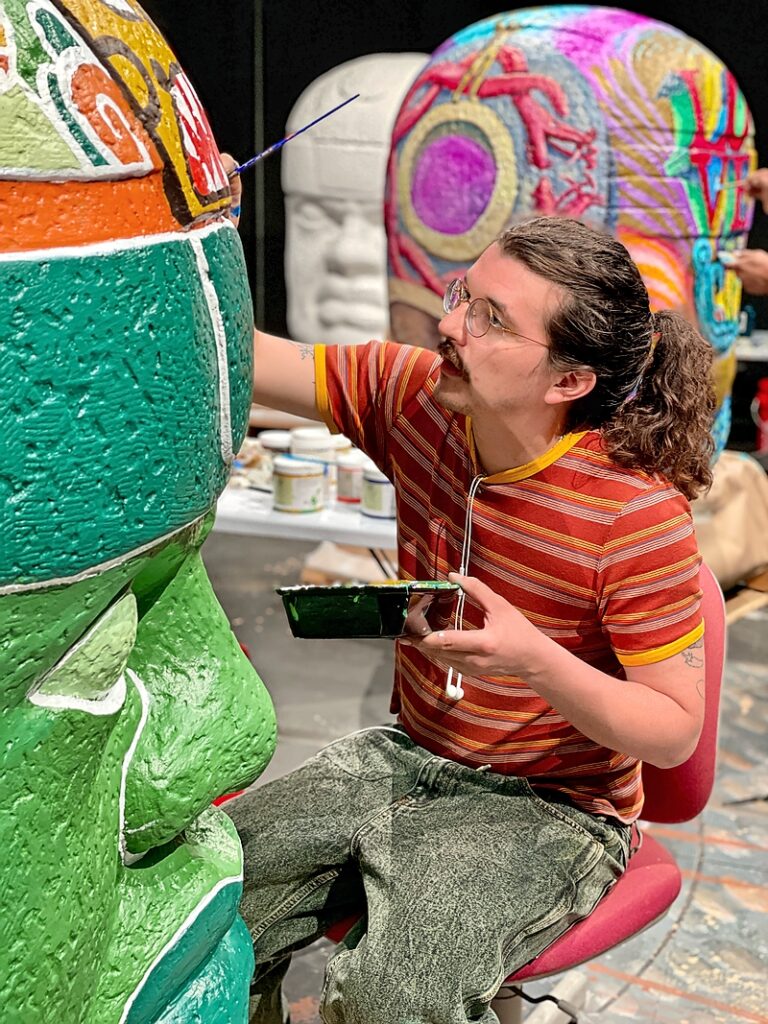
PABLO HELM-HERNANDEZ FROM MINNEAPOLIS
“The Olmecs have the first writing found in the Americas—and I think that’s really amazing—so I wanted to use some of their glyphs.”
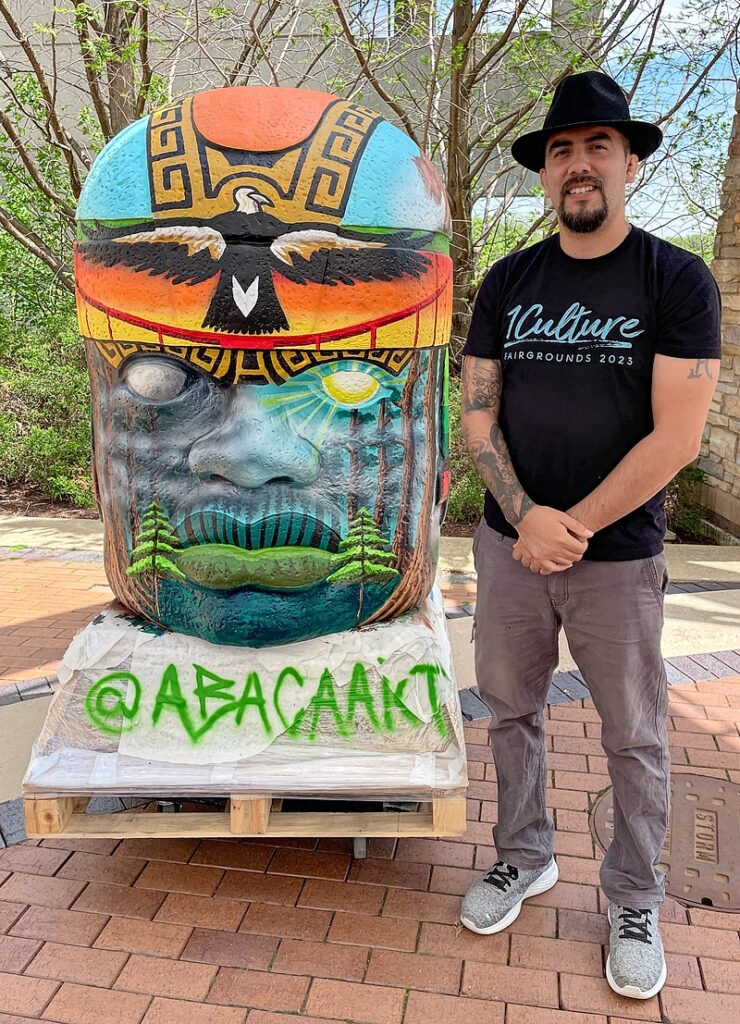
ARSENIO BACA FROM SAN FRANCISCO
“It’s a love letter to my home state of California. [On the back] in the sky is a grandmother spirit in the sun, which is dedicated to my grandma who just recently passed, and I wanted to dedicate this whole piece to her.”
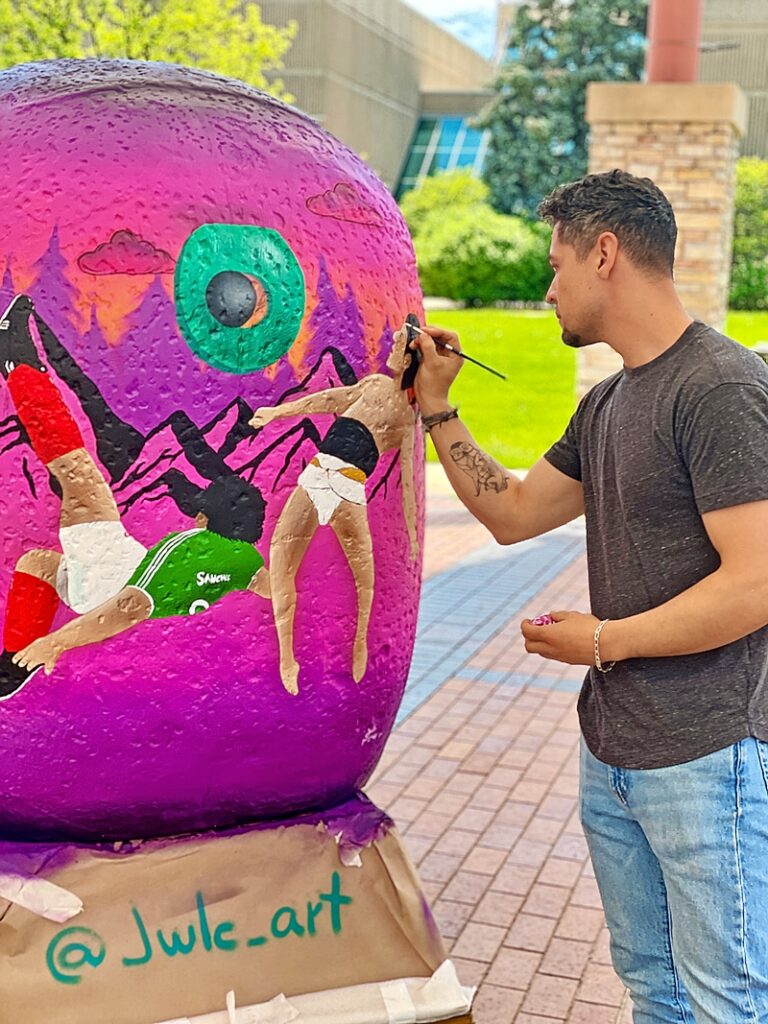
JULZ MENDOZA FROM DENVER
“I feel like this project is very much my style—cultural surrealism… I wanted to give homage to the creator of the ball game.”
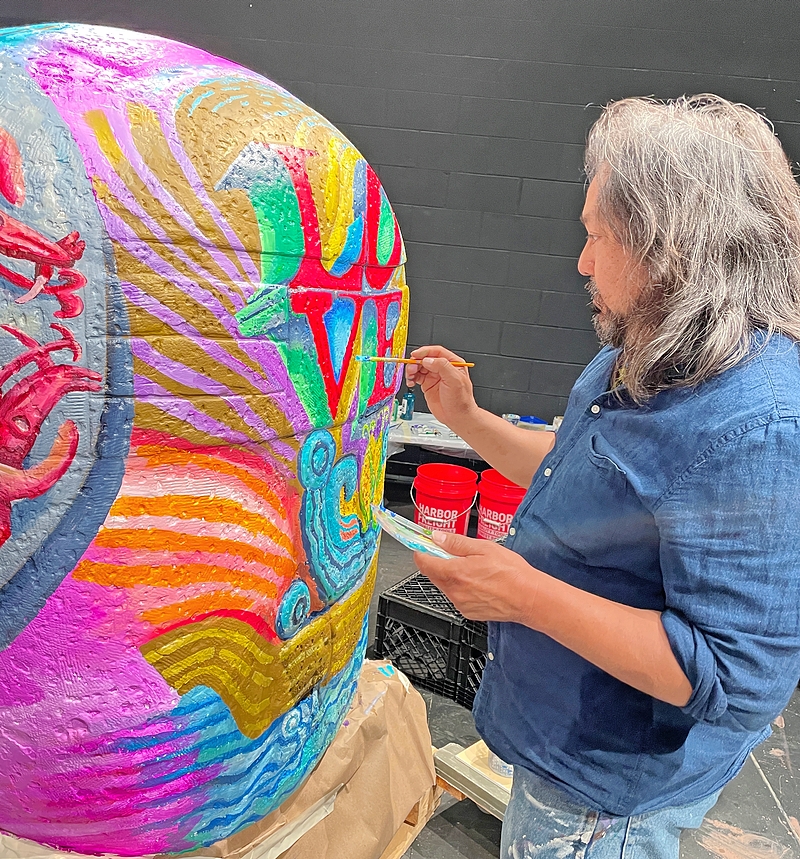
CESAR VIVEROS FROM PHILADELPHIA
“There are two parallel stories. One is my life in Mexico, and one is my life in the city of Philadelphia…I’ve got images of the Olmec civilization—the writing system, the ball game—but also images that are very particular to Philadelphia—the Love sculpture, Rocky, Ben Franklin, the Liberty Bell.”
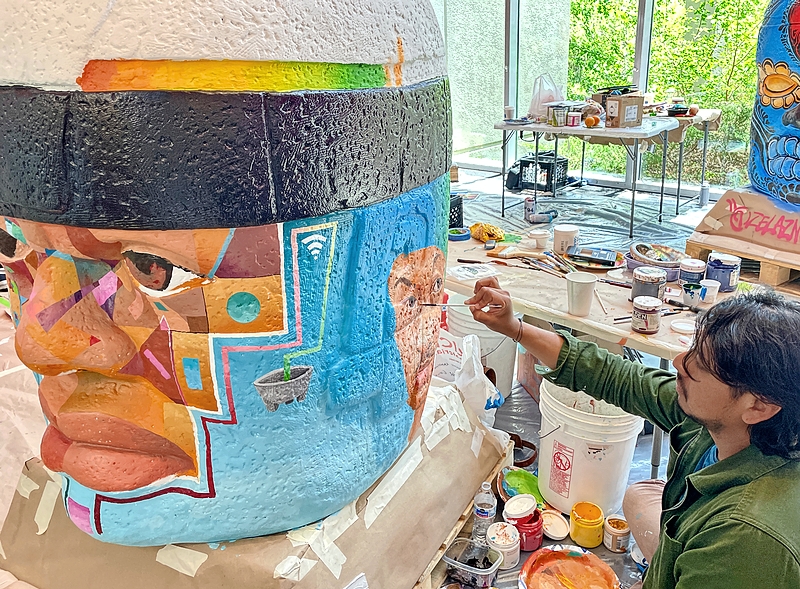
MAURO CARRERA FROM FRESNO, CALIFORNIA
“The general concept I have going on is pasado, presente, futuro—past, present, and future. One thing I’m trying to dissect is to create a piece of artwork that represents our culture as Mexicans and Mexican Americans, being very conscious that we are present-day descendants of cultures like the Olmecs. I’m plugging in certain pop-culture icons along with images such as the corn, which goes back to the older civilizations.”
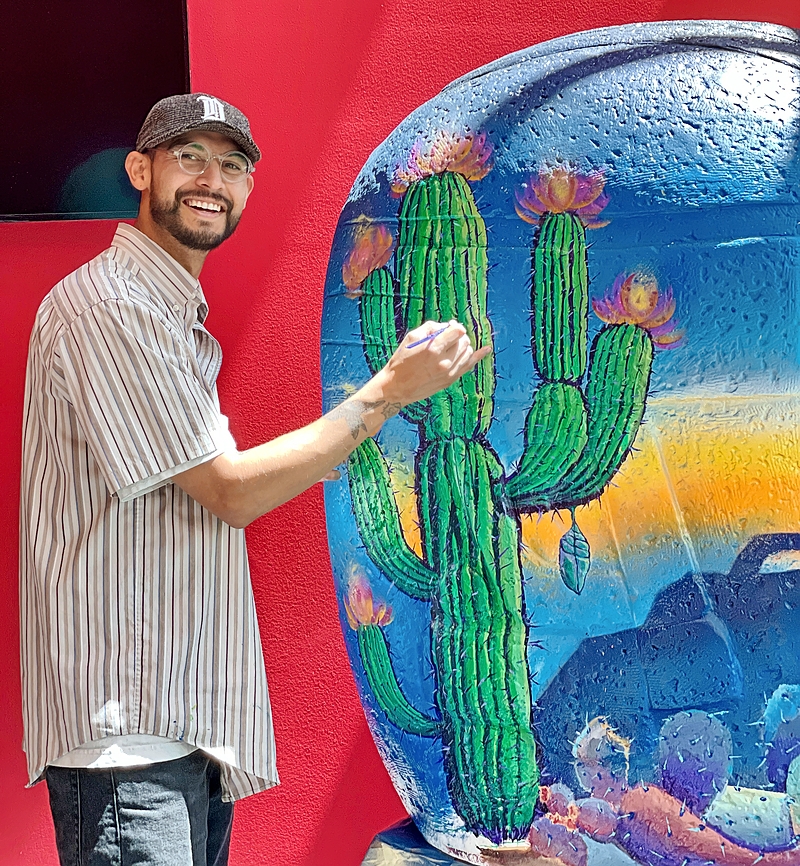
LUIS NOVOA FROM SALT LAKE CITY
“I wanted to tell the story of how beautiful migration is but also the sacrifices and the struggles that you have to overcome to navigate a whole different world. The cactus represents that symbolism of the struggle but the beauty of those flowers and how these things can bloom. And it’s a story about my family’s migration from Michoacán, Mexico, to Utah…Once I finish a piece, it’s not for me anymore—it takes on a life of its own.”
Photos: Jen Banowetz


